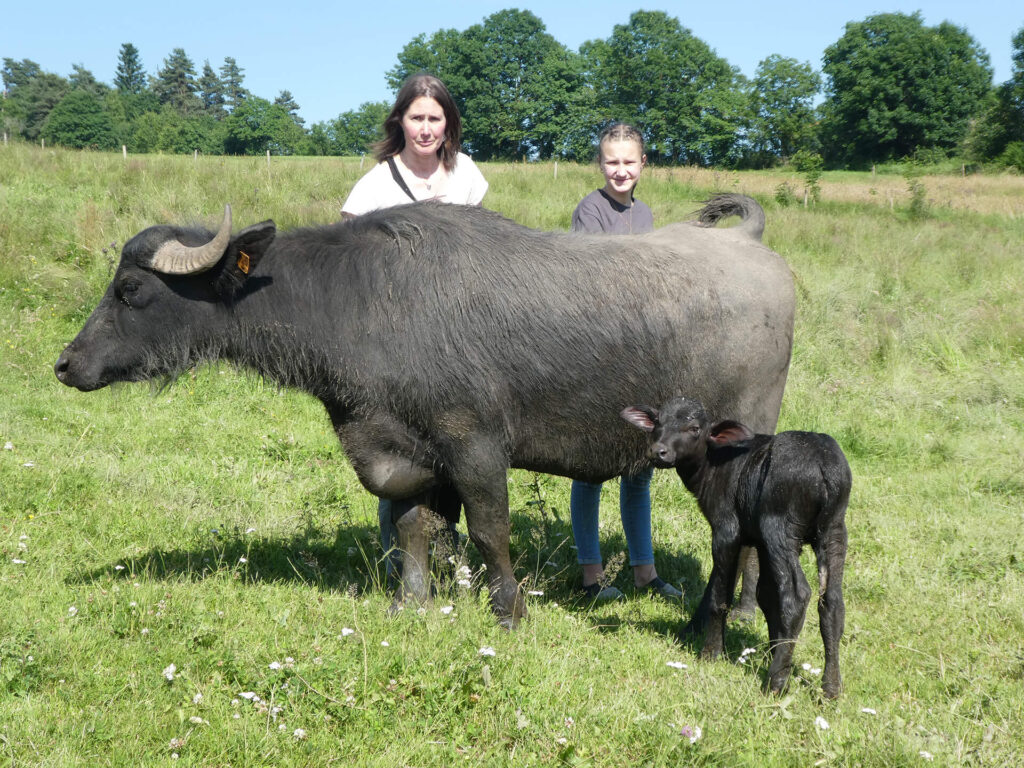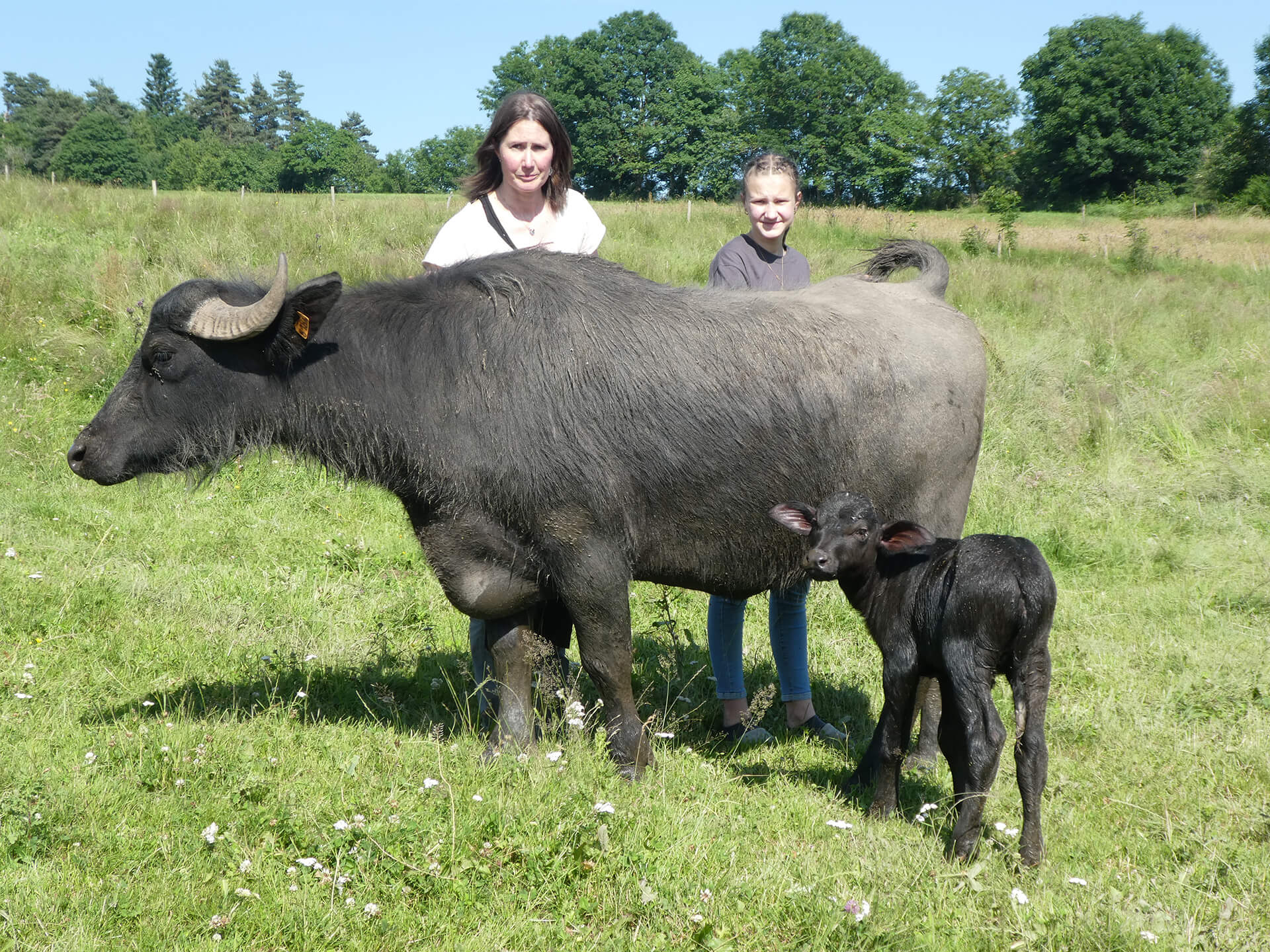
Bufflonne: Exploring the World of Italian Water Buffalo and its Unique Cheese
The term “bufflonne” refers to the female water buffalo, particularly those found in Italy. These magnificent animals play a crucial role in the production of a highly prized dairy product: mozzarella di bufala campana. This article delves into the world of the bufflonne, exploring its history, characteristics, and the delectable cheese it provides.
The History and Origin of the Bufflonne in Italy
While water buffalo are not native to Italy, their presence dates back centuries. It is believed they were introduced to the Italian peninsula sometime during the Middle Ages, possibly by Arabs or during the Norman invasions. Initially, the bufflonne were used as draft animals, helping with agricultural tasks in the marshy regions of southern Italy. Over time, their milk became valued for its unique properties and suitability for cheesemaking.
The region of Campania, particularly the provinces of Caserta and Salerno, became the heartland of bufflonne farming. The fertile plains and abundant water resources provided an ideal environment for these animals to thrive. Farmers developed specific breeding and husbandry techniques to optimize milk production and quality. This ultimately led to the creation of mozzarella di bufala campana, a cheese that is now recognized and protected by the European Union’s Protected Designation of Origin (PDO) status.
Characteristics of the Italian Bufflonne
The Italian bufflonne is a robust and adaptable animal. They are well-suited to the warm, humid climate of southern Italy. These buffalo are typically black in color, with a thick hide that provides protection from the sun and insects. They are semi-aquatic animals, spending a significant amount of time in water, which helps them regulate their body temperature and maintain healthy skin.
Compared to dairy cows, bufflonne produce less milk, but their milk is significantly richer in fat and protein. This high fat content contributes to the creamy texture and rich flavor of mozzarella di bufala campana. The milk also contains a higher concentration of calcium and other essential nutrients. The diet of the bufflonne, which typically consists of grasses and forage grown in the region, also influences the flavor and quality of the milk.
Mozzarella di Bufala Campana: A Culinary Treasure
The primary reason for raising bufflonne in Italy is for the production of mozzarella di bufala campana. This cheese is a culinary treasure, renowned for its delicate flavor, soft texture, and milky aroma. Unlike mozzarella made from cow’s milk (fior di latte), mozzarella di bufala campana has a distinctive tangy flavor and a slightly more elastic texture. It is traditionally made using fresh bufflonne milk, rennet, and salt. The cheesemaking process is carefully controlled to ensure the highest quality and adherence to PDO standards.
The PDO status of mozzarella di bufala campana guarantees that the cheese is made using traditional methods, with milk sourced exclusively from bufflonne raised in specific regions of Campania, Lazio, Puglia, and Molise. This ensures the authenticity and quality of the product. [See also: Different Types of Italian Cheese] The cheese is typically sold fresh, packed in water or whey to maintain its moisture and flavor.
The Importance of Bufflonne Farming in Italy
Bufflonne farming is an important part of the agricultural economy in southern Italy. It provides livelihoods for farmers, cheesemakers, and other related industries. The production of mozzarella di bufala campana supports local communities and contributes to the preservation of traditional farming practices. The industry is also a significant draw for tourism, with visitors flocking to the region to sample the authentic cheese and learn about the bufflonne farming traditions.
However, bufflonne farming also faces challenges. These include the rising costs of feed and labor, as well as the need to comply with increasingly stringent environmental regulations. Farmers must also manage the health and welfare of their animals, ensuring that they are well-cared for and protected from disease. Despite these challenges, the demand for mozzarella di bufala campana remains strong, and bufflonne farming continues to be a vital part of the Italian agricultural landscape.
The Future of Bufflonne Farming
The future of bufflonne farming in Italy depends on several factors. These include the ability to adapt to changing market conditions, the adoption of sustainable farming practices, and the continued promotion of mozzarella di bufala campana as a high-quality, authentic Italian product. Research and development efforts are also focused on improving bufflonne breeding techniques, optimizing milk production, and enhancing the cheesemaking process.
Furthermore, there is growing interest in exploring other uses for bufflonne milk, such as the production of yogurt, ricotta, and other dairy products. This diversification could help to create new markets and increase the profitability of bufflonne farming. As consumers become increasingly interested in artisanal and locally sourced foods, the demand for mozzarella di bufala campana and other bufflonne milk products is likely to continue to grow. [See also: Sustainable Farming Practices in Italy]
The Bufflonne Beyond Italy
While Italy is most famous for its bufflonne and mozzarella production, water buffalo are raised in many other parts of the world, including Asia, South America, and even some parts of North America. In these regions, bufflonne are valued for their milk, meat, and draft power. The milk is used to make a variety of cheeses and other dairy products, while the meat is a popular source of protein. In some cultures, bufflonne are also used for transportation and agricultural work.
The characteristics and management practices of bufflonne farming vary depending on the region and the specific breed of buffalo. However, the fundamental principles of animal husbandry and milk production remain the same. As global demand for dairy products continues to rise, bufflonne farming is likely to play an increasingly important role in meeting the nutritional needs of people around the world.
Conclusion
The bufflonne is a remarkable animal that plays a vital role in the production of mozzarella di bufala campana, a culinary treasure enjoyed around the world. From its humble beginnings as a draft animal to its current status as a symbol of Italian gastronomy, the bufflonne has a rich history and a promising future. As consumers continue to seek out authentic, high-quality foods, the demand for mozzarella di bufala campana and other bufflonne milk products is likely to remain strong, ensuring the continued importance of bufflonne farming in Italy and beyond. The story of the bufflonne is a testament to the enduring power of tradition, innovation, and the pursuit of culinary excellence. The female water buffalo, or bufflonne, continues to be a source of delicious and unique dairy products. Understanding the history and importance of the bufflonne enriches our appreciation for the food we consume.

